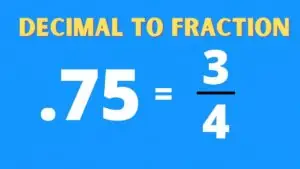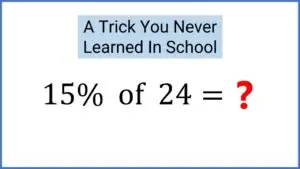When it comes to multiplying binomials in math, the FOIL method is a powerful technique that can simplify the process and lead to accurate results. FOIL stands for First, Outside, Inside, and Last, which refers to the order in which terms are multiplied. In this guide, we will explore the step-by-step process of using the FOIL method, along with examples to illustrate its application. By the end, you’ll have a solid understanding of how to FOIL and be able to confidently tackle binomial multiplication problems.

✅ AI Essay Writer ✅ AI Detector ✅ Plagchecker ✅ Paraphraser
✅ Summarizer ✅ Citation Generator
What is the FOIL Method?
The FOIL Method is a systematic approach used to multiply binomials. It serves as a helpful mnemonic device that ensures no terms are overlooked during the multiplication process. The acronym FOIL stands for First, Outside, Inside, and Last, which represents the order in which the terms are multiplied.
The FOIL method can be summarized as follows:
- Multiply the First terms of each binomial.
- Multiply the Outside terms of each binomial.
- Multiply the Inside terms of each binomial.
- Multiply the Last terms of each binomial.
After performing these multiplications, combine like terms to simplify the final answer.
How to FOIL: Step-by-Step Guide
Let’s walk through the process of using the FOIL method with two examples to demonstrate its application.
Example 1: (q – 3)(q – 7)
Step 1: Multiply the First terms: q * q = q^2
Step 2: Multiply the Outside terms: q * (-7) = -7q
Step 3: Multiply the Inside terms: (-3) * q = -3q
Step 4: Multiply the Last terms: (-3) * (-7) = 21
Step 5: Write down the four results in the order obtained: q^2 – 7q – 3q + 21
Step 6: Combine like terms: q^2 – 10q + 21
Therefore, the product of (q – 3)(q – 7) using the FOIL method is q^2 – 10q + 21.
Example 2: (5n + 3)(n + 6)
Step 1: Multiply the First terms: 5n * n = 5n^2
Step 2: Multiply the Outside terms: 5n * 6 = 30n
Step 3: Multiply the Inside terms: 3 * n = 3n
Step 4: Multiply the Last terms: 3 * 6 = 18
Step 5: Write down the four results in the order obtained: 5n^2 + 30n + 3n + 18
Step 6: Combine like terms: 5n^2 + 33n + 18
Hence, the product of (5n + 3)(n + 6) using the FOIL method is 5n^2 + 33n + 18.
Applying the FOIL Method to Multiplying Three Binomials
While the FOIL method is primarily used for multiplying two binomials, it can also be applied to multiplying three binomials, although with a slight modification. Let’s examine an example to understand the process.
Example: (4y – 7)(2y + 10)(7 – 2)
Step 1: Pair off the first two binomials: (4y – 7)(2y + 10)
Step 2: Multiply the paired binomials using the FOIL method: (8y^2 + 40y – 14y – 70)
Step 3: Combine like terms: (8y^2 + 26y – 70)
Step 4: Multiply the new binomial with the remaining binomial from the original equation: (8y^2 + 26y – 70)(y – 2)
Step 5: Factor and simplify the expression: (8y^3 + 10y^2 – 122y + 140)
By following these steps, we successfully multiplied three binomials using the FOIL method.
Tips for Success in Using the FOIL Method
To effectively use the FOIL method and enhance your proficiency in multiplying binomials, consider the following tips:
- Practice regularly with various examples to strengthen your understanding.
- Pay attention to the order in which the terms are multiplied to avoid errors.
- Double-check your calculations and combine like terms accurately.
- Familiarize yourself with related concepts, such as factoring and simplifying expressions.
- Seek additional resources, such as online tutorials or textbooks, to reinforce your knowledge.
By following these tips, you’ll become more proficient in using the FOIL method and gain confidence in solving binomial multiplication problems.
Summary and Conclusion
The FOIL method provides a systematic approach to multiply binomials accurately and efficiently. By following the First, Outside, Inside, and Last order, you can avoid overlooking any terms and arrive at the correct solution. Remember to combine like terms to simplify the final answer.
Through the step-by-step guide and examples provided in this guide, you should now have a solid grasp of how to FOIL in math. With practice and patience, you can master this technique and confidently tackle binomial multiplication problems.
Remember, practice makes perfect, so keep honing your skills and enjoy the process of unraveling the beauty and power of mathematics!
FAQ
How does the FOIL method relate to polynomial multiplication?
The FOIL method specifically applies to the multiplication of binomials, which are polynomial expressions with two terms. By using the FOIL method, we systematically multiply the corresponding terms of two binomials, ensuring that none are overlooked. The FOIL method simplifies polynomial multiplication by providing a clear and organized approach to multiply the terms.
Can the FOIL method be applied to other algebraic equations?
The FOIL method is designed specifically for binomial multiplication. However, similar techniques can be applied to more complex algebraic equations. For example, when dealing with trinomial multiplication, we can still use the FOIL method to multiply the first terms, outside terms, inside terms, and last terms, while also combining like terms as needed. It’s important to adapt the method based on the specific equation and its terms.
Are there any tips or tricks to improve proficiency with the FOIL method?
Absolutely! Here are some tips to improve your proficiency with the FOIL method:
- Practice regularly with a variety of examples to build familiarity and speed.
- Pay attention to the signs and operations when multiplying terms, especially when dealing with negatives.
- Use mnemonic devices like the FOIL acronym to remember the order of operations.
- Double-check your work and combine like terms accurately to avoid errors.
- Seek additional resources, such as online tutorials or worksheets, to reinforce your understanding.
What are some real-life applications of the FOIL method in math?
While the FOIL method may seem like an abstract concept, it has practical applications in various fields. Some real-life applications include:
- Algebraic modeling: FOIL is essential when creating mathematical models to solve real-world problems in fields such as physics, engineering, and finance.
- Expansion of expressions: The FOIL method is used to expand and simplify algebraic expressions, which can help in solving equations and manipulating formulas in different disciplines.
- Computer programming: In programming, the FOIL method is applied to perform calculations and simulations, enabling the development of algorithms and mathematical models.
How does the FOIL method simplify complex algebraic expressions?
The FOIL method simplifies complex algebraic expressions by breaking them down into smaller, more manageable parts. By systematically multiplying the corresponding terms of binomials, the FOIL method ensures that no terms are overlooked. This organized approach allows us to combine like terms effectively and simplify the expression by reducing redundancy and grouping similar terms together. The FOIL method helps in transforming complex expressions into more concise and manageable forms, facilitating further calculations and analysis.
Follow us on Reddit for more insights and updates.





Comments (0)
Welcome to A*Help comments!
We’re all about debate and discussion at A*Help.
We value the diverse opinions of users, so you may find points of view that you don’t agree with. And that’s cool. However, there are certain things we’re not OK with: attempts to manipulate our data in any way, for example, or the posting of discriminative, offensive, hateful, or disparaging material.